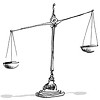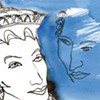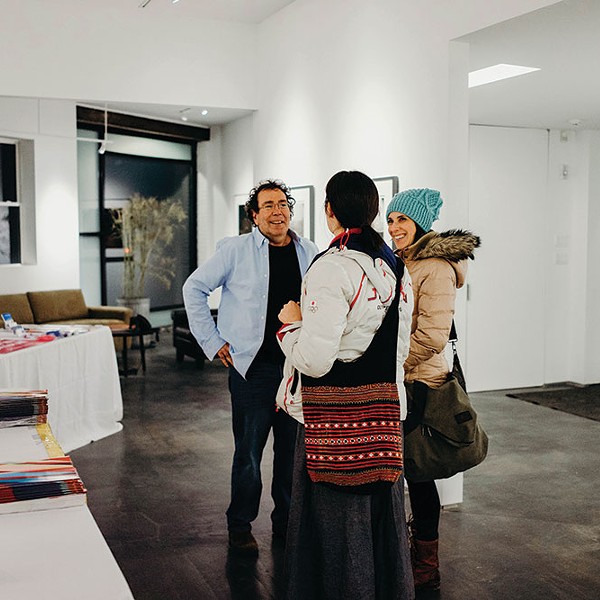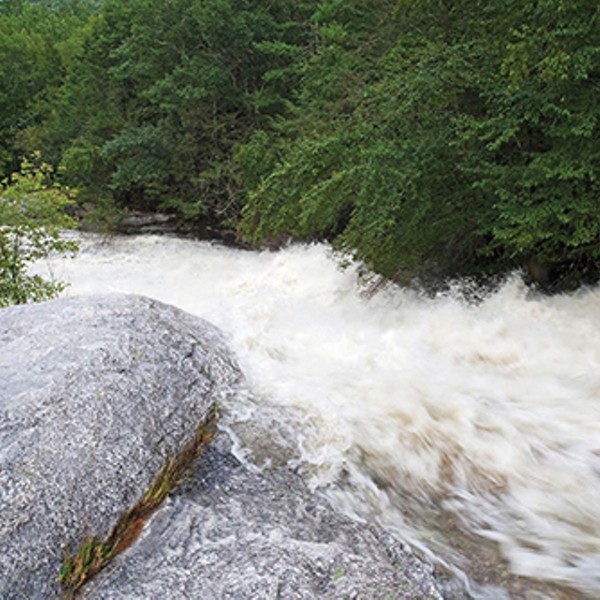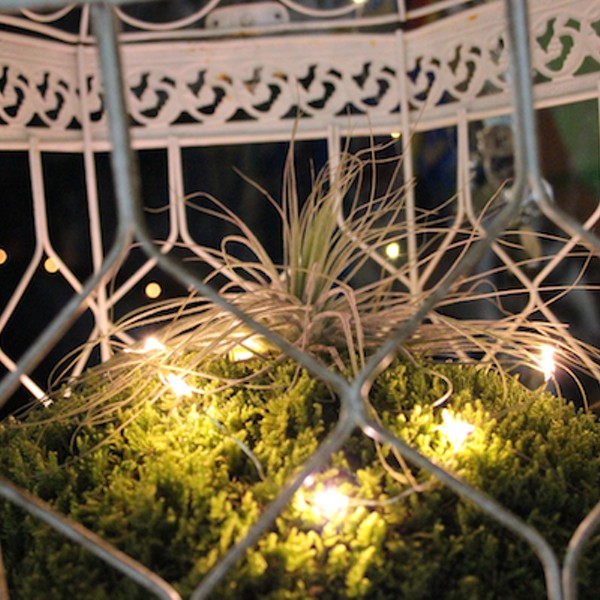In August, I was invited to present a seminar at the American Psychological Association (APA) conference based on my photography called “The Inner Goddess and the Inner Gaze.” My presentation, given in Toronto on August 7, explored the phenomenon of the inner feminine, or anima, and its relationship to both men and women in our journey of growth and healing through the use of mirrors and photography.
Since I am not a psychologist, my presentation was co-sponsored by one: Dr. Christine Farber, a longtime Planet Waves reader, who was my astrology student from the Omega Institute.
My photography project, called Book of Blue, is an indirect outgrowth of my work as an astrologer, though expressed in photographs and intimate essays. As an astrologer, I have written and worked primarily with and for women, and in the process have explored my perceptions of women, studied the paths of their lives and done my best to understand their choices and values. I have always been conscious that part of why I am doing this work is to heal my relationship with my mother and with all women; and part of it is to be of service to women in response to a lifelong calling.
Book of Blue is about the use of visual imagery to heal the self-image of women, in the eyes of both men and women. We all agree that we are overwhelmed with idealized, reconstructed images of young women, and these cause disturbances in our ability to perceive women for who they are. More often than not, the personhood of women is robbed by false images and ideas about womanhood. One of our biggest psychological challenges as a society involves men who cannot embrace their inner feminine and women who cannot embrace their inner masculine. The result is a lot of projection; we tend to see the ‘opposite’ sex as something that exists exclusively outside of us—despite many feelings and experiences calling us in.
You might say that I am a woman-identified man. Given the choice of who is more ‘my kind’ of person, as in who I feel more like, I certainly feel like I have far more in common with most women than with most men. Yet in much the same way that relationships among women are fragmented by mistrust and competition, I noticed something similar in my own relationships that I set about working to resolve. The healing process largely facilitated by my work on Book of Blue has involved repairing a sense of alienation and isolation that has gradually given way to an atmosphere of communication and contact.
The [usually] fun part is I also get to be a man, and experience and witness the intensity and subtlety of female beauty, that is, intellectual, emotional and physical beauty, from the viewpoint of being male. Along the way, my inner feminine gets to make friends with other women and learn how to be female; and my inner man gets to polarize into his masculinity and explore our contrasts and how they feel. Along the way, I am working out a relationship with myself.
Conscious of holding this space as mental preparation, I am able to create a space for my photographic subjects to see and feel themselves; to be a witness to their own self-aware femininity and humanity. Women spend a lot of time in mirrors, but I wonder how much of it is really about witnessing themselves. In my studio, that is precisely what they are invited to do: as a means of seeing their own beauty, integrating their sense of identity, processing guilt and body issues, and making peace with their judgments about themselves.
In Search of Venus
In astrology we work with inner archetypes all the time; they are the lead characters in the astrological drama. For example, everyone has Mars and Venus working in their chart; we all possess the same inner masculine and feminine aspects. Where these things are placed, and how we relate to them, are important factors that help shape our personality and affect how we adapt to life in our skins and in society. We know there is plenty of gender tension around us, and we feel it in our relationships; there are also gender relationships within us, which shape our consciousness, perceptions and experiences.
Usually we project that tension outward, rejecting the opposite gender internally and seeing her as a phenomenon in the outer world; without remembering anything about her origins in consciousness.
In terms of the inner feminine, I am talking primarily about Venus, though she takes a number of other forms: for example the Moon (who often represents a child or the child self as well); certain of the more potent asteroids (Psyche, Juno or Vesta, for example); and an important new discovery, Eris (the castaway woman). Yet even when we do astrology, to what extent do we experience and explore these things as having actual life rather than symbolic existence?
Were I to write an astrology book, it might be called something like Astrology in Real Life, revealing how we can use the chart as a map to a quest rather than as a purely mental construction. My inner woman is described in my chart as Venus in Taurus in the 11th house, conjunct the asteroid Photographica. Since this is in Astroese, I will translate to English. My inner woman is flirtatious and friendly on the outside, but she’s a traditionalist on the inside. Relationships are important to her, as are sex and sensuality. The thing they must all have in common is values. She seeks pleasure but it must have substance to it. She’s a public person who is depended on for her stability and integrity. And she likes to be photographed, and to create photographs.
She’s someone I’m getting to know, and much of my work with Book of Blue—doing more than 150 photo sessions of women looking in mirrors, across Europe and North America—has been a process of getting to know her. In using my camera, I explore, create and relate, and using my studio I create the space for others to do the same thing. The photographs then become a point of meditation for the subject, who can use them to explore her mental and emotional states, and make peace with her way of seeing herself.
Autogynephilia and Gender Dysphoria
The idea of a man loving himself as a woman has been described as a form of pathology in the psychological literature, part of a trend of categorizing an increasing number of erotic feelings as forms of mental illnesses, commonly known as gender dysphorias. After a long struggle to have homosexuality removed from the Diagnostic and Statistical Manual (DSM), there is now a movement to bring in many other similar feelings and experiences.
The clinical term for a man loving himself as a woman is autogynephilia. It was coined in 1989 by the Canadian psychologist Ray Blanchard to refer to “a man’s paraphilic tendency to be sexually aroused by the thought or image of himself as a woman.” It has been used as a means of explaining the feelings underlying being a transvestite, among other things. The term paraphilic basically means a kind of fetish that you need in order to get off. However, I don’t think it’s a paraphilia. Blanchard himself has said that “an autogynephile does not necessarily become sexually aroused every time he pictures himself as female or engages in feminine behavior, any more than a heterosexual man automatically gets an erection whenever he sees an attractive woman. Thus, the concept of autogynephilia...refers to a potential for sexual excitation”
Yet everyone has this potential, obviously. And it would seem like something we would want to encourage. So like much of psychology he is describing something that everyone feels at some time in pathological terms. Astrology is much more compassionate here; any astrologer will tell you that we all have Venus and Mars and identify with both to varying degrees. It would help if more psychologists studied astrology.
Gaze of the Inner Goddess
The idea of a Book of Blue portrait session is that the model focuses on herself, while I hold space and document the experience. The model may be dressed or nude; nudity tends to enhance the feeling of vulnerability, yet in reality is simply more basically human. Excellent images have come from sessions with the model dressed but I have not analyzed what feels different about them. I’ve also learned that nude modeling is something that many women contemplate and consider; in reality, a great many explore the territory. Sometimes it’s about money and sometimes it’s about fun and liberation. Sometimes it’s for the pleasure of being seen.
I am aware that my presence influences the images, but it also makes them possible. My maleness is a specific factor; much of what women must contend with is the feeling of being looked at by other men, and now I’m there looking at them up close. We are exploring the space and the feeling of being seen.
This is a fine line to walk. I will work at different emotional temperatures and proximity depending on my relationship to the subject of the photo. In all, I believe that my presence “takes over” the aspect of the woman who is concerned about being seen, and allows me to do that part. The inner spectator is going to be in her mind anyway. Hakomi Therapy discovered that these inner roles could be occupied by someone external, thus liberating the person from having to do it themselves. I see my part as replacing the critical witness with a loving witness. This presents the opportunity to be seen by someone who is open, accepting and moreover not afraid of their self-judgments, which as I have learned, from much experience, can be quite painful.
I am willing to go as far with my photo subjects as they want, and have journeyed in this process through a diversity of states from grief to erotic self-exploration to dissociative experiences and many levels of what might be called “ordinary consciousness.” More than a decade of experience as an astrologer, holding space for emotional and spiritual process, helps support this space and the process that unfolds here.
One potential result is that a woman will encounter her inner goddess, that is, her essential inner woman, through the experience of making the images, and seeing them afterwards.
Is it Art, or is it Therapy?
We are standing here at the threshold where art functions as a healing modality. When art is working this is often the case, though this particular process makes it more personal than usual. I never set out to create a therapeutic model—only to make images and learn something about myself and the people involved. What I quickly learned was that the model was working out something in her relationship to herself; I was working out something in relationship to her; and I was meeting my inner feminine in many different forms.
I discovered that I was working right in the space where her self-image is created. So in a sense the resulting photographs are documents of a new self-image in the process of being developed, discovered or witnessed. It is fascinating to see, in models I have worked with over a long period of time, the ways in which facial features, the expression in her eyes and her presence with herself evolve over time. They are also documents of me exploring my own self-image as a woman; and a long process of aligning with the experience of women being in harmony with themselves. In my view this is correcting the experience of generations of women before me being conditioned to be in conflict with themselves; to disapprove of themselves; to be someone other than who they are.
My sense is that whatever else is happening, I am getting photographs of the real woman, not a projected vision of her. This would be the process of someone discovering her inner goddess. To do that, of course, I have had to know and love my own inner goddess; she in truth is the one who stands guard over the photo sessions and the resulting images, holding space for the process to unfold, and gradually teaching me to see women for who they are and not who I would have them be. I trust that my photo subjects are learning to do the same thing for themselves.
Eric Francis Coppolino writes daily at PlanetWaves.net.








